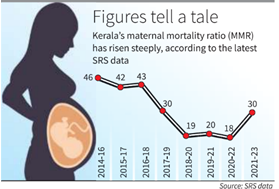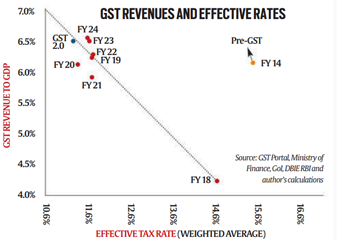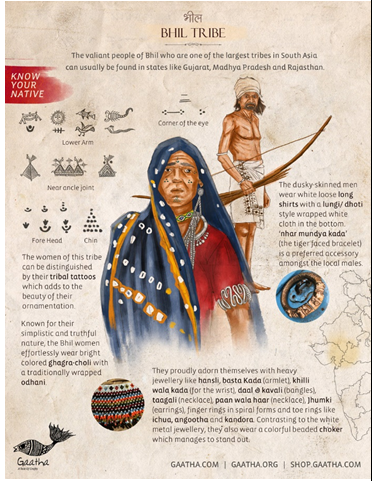

9th September 2025 (14 Topics)
Mains Issues
Context:
The Union Home Ministry has renewed the tripartite Suspension of Operations (SoO) agreement with Kuki militant groups and allowed ‘free movement’ on National Highway-2, a critical route between Nagaland and Manipur.
Understanding the Implications of the Renewed Ceasefire Agreement
Background of the Conflict
- Manipur has been witnessing violent ethnic clashes since May 2023 between the Meitei and Kuki
- The crisis has led to deepening fault lines, displacement of people, and serious law-and-order challenges.
- National Highway-2 (NH-2), connecting Nagaland’s Dimapur to Manipur’s capital Imphal, has been a lifeline disrupted by the conflict.
Suspension of Operations (SoO) Agreement
- The SoO is a tripartite agreement involving the Union Government, State Government, and insurgent groups.
- In the latest renewal, the Kuki National Organisation (KNO) and United People’s Front (UPF) remain under its framework.
- Key revised terms include:
- Consolidation of camps and reduction in their number.
- Deposition of weapons under CRPF oversight.
- Biometric verification and stricter accounting of cadres.
- Restrictions on movements of cadres outside camps without prior approval.
Free Movement on NH-2
- The Government permitted the Kuki-Zo Council (KZC) to lift blockades and resume unhindered travel on NH-2.
- The highway is critical for trade, transport, and supply chains between Nagaland and Manipur.
- Its reopening signals confidence-building between the Government and tribal representatives.
Implications for Security and Governance
- Positive Implications:
- Can reduce hostilities between communities.
- Enables humanitarian access to affected areas.
- Strengthens Centre’s engagement with armed groups under democratic frameworks.
- Challenges:
- Meitei civil society groups (like COCOMI) remain opposed, fearing legitimisation of armed Kuki outfits.
- Ethnic polarisation continues, with trust deficits between groups.
- Presence of non-SoO Kuki groups like United National Liberation Front (UNLF) complicates peace prospects.
Continuing Challenges
- Ethnic Polarisation: Deep divides between valley-based Meiteis and hill-based Kukis.
- Arms Control: Infiltration of weapons and cross-border dynamics.
- Civilian Pushback: Opposition from Meitei groups to any concessions to Kuki groups.
- Long-Term Political Settlement: Need for reconciliation measures beyond security arrangements.
Way Forward
- Inclusive Dialogue: Engage both Kuki and Meitei stakeholders under a neutral framework to build trust.
- Humanitarian Approach:Prioritise resettlement of displaced persons and restore essential services.
- Monitoring Mechanism: Independent oversight of SoO implementation to ensure accountability.
- Balanced Federal Response: Central Government must ensure that state and community concerns are equitably addressed.
- Long-Term Peace Process: Move from ceasefire management towards political reconciliation with constitutional safeguards.


Mains Issues
Context:
The Sanchar Saathi mobile app, launched on 17 January 2025, has crossed 50 lakh downloads within seven months, emerging as a key initiative against rising cybercrimes and telecom fraud.
Key Dimensions of the Sanchar Saathi App
Citizen-Centric Security Features 
- Chakshu Module: Enables reporting of fraudulent calls, SMS, and WhatsApp scams (e.g., KYC-updating scams).
- IMEI Tracking & Blocking: Assists in tracing stolen/lost devices, blocking counterfeit/cloned phones, and preventing their circulation.
- Verification of Mobile Connections: Allows users to identify and block suspicious connections created via forged KYC details.
- Handset Genuineness Check: Confirms whether a purchased device is genuine.
- International Call Reporting: Helps report calls originating abroad but disguised as domestic (+91 numbers).
- ISP Information Access: Provides details of Internet Service Providers (ISPs) based on PIN code or location.
National Cybersecurity Significance
- Scale of Cybercrime: CERT-In recorded 41 lakh cyber incidents in 2024 compared to 15.92 lakh in 2023.
- Fraudulent Connections: Over 3 crore fake mobile connections
- Fraudulent Communication Curb: 16.97 lakh WhatsApp accounts disabled, 20,000 bulk SMS senders blacklisted.
- Transparency & Public Monitoring: A real-time dashboard makes enforcement visible to citizens, reinforcing accountability.
Legal and Privacy Safeguards
- IT Act, 2000: Provides the legal framework for cybercrime prevention, hacking penalties, and secure transmission.
- DPDP Act, 2023: Ensures minimal data collection, user consent, transparency, and limited law-enforcement access.
- Privacy Protection: No commercial profiling, limited data usage, strict compliance with statutory mandates.
Governance and Citizen Participation
- Jan Bhagidari Model: Empowers users to act as first responders against fraud.
- Inclusive Access: Available in Hindi and 21 regional languages on Android and iOS.
- Trust in Digital Services: Enhances confidence in banking, e-learning, healthcare, and government apps accessed through mobile devices.
Strengths:
- Integration of citizen reports with enforcement mechanisms.
- Direct contribution to reducing telecom-related frauds.
- Inclusive, multilingual, mobile-first design.
Challenges:
- Ensuring consistent user awareness and adoption, especially in rural areas.
- Coordinating between DoT, CERT-In, TRAI, and law enforcement for quick redressal.
- Addressing evolving cyber threats like AI-driven scams and deepfake frauds.
Way Forward:
- Mass Awareness Campaigns on cyber hygiene, especially targeting vulnerable groups.
- Periodic Security Upgrades of the app to counter new types of fraud.
- Integration with State Police Cyber Cells for quicker tracing of cybercrime.
- International Collaboration on tracing telecom fraud originating abroad.
|
PYQ: “Discuss different types of cybercrimes and measures required to be taken to fight the menace.” (2021) |


Mains Issues
Context:
The 24th round of Special Representatives (SR) talks between India and China was held in August 2025 to advance discussions on a “reasonable and mutually acceptable framework” for boundary settlement based on the 2005 Political Parameters agreement.
Evolution of India–China Border Negotiations
Vajpayee’s Initiatives and Early Efforts
- 1979 Visit to China: Atal Bihari Vajpayee, as External Affairs Minister, initiated the process of normalisation post-1962 war.
- 2003 Visit as Prime Minister: Proposed political-level engagement; Special Representatives mechanism established.
- Political Parameters Agreement (2005): Both sides agreed on broad principles — safeguarding settled populations, strategic considerations, and natural geographical features.
Political Parameters Agreement, 2005
- Core Principles: Settlement from a political perspective, not purely legal-historical.
- Article IV: Recognition of each other’s strategic and reasonable interests.
- Article VII: Protection of settled populations in border areas.
- Strategic Understanding: Suggested a potential “as-is-where-is” settlement (Aksai Chin with China, Arunachal Pradesh with India).
Challenges and Stalled Progress
- China’s Reversal (2007): Foreign Minister Yang Jiechi dismissed the “settled populations” safeguard, reviving claims over Tawang.
- Ambiguity in Framework: Despite claims of an “18-point consensus” by 2013, lack of political will hindered finalisation.
- Border Incidents:Chumar (2014), Doklam (2017), Galwan crisis (2020) undermined trust and highlighted failure of earlier border management agreements (1993, 1996, 2005, 2013).
Recent Developments
- Resumption of Talks (2025): After years of stagnation, both SRs agreed to revive discussions on the 2005 framework.
- Early Harvest Agreement: Proposed settlement of the Sikkim–Tibet boundary as a first step.
- Border Management Reforms: Tasked with replacing outdated mechanisms post-2020 clashes.
Strategic Implications
- Persistent Military Buildup: Both countries face heavy costs in sustaining deployments across the LAC.
- Regional Impact: Involves third-country trijunctions (Bhutan, Nepal, Myanmar, Pakistan).
- Geopolitical Stakes: Border resolution could reshape bilateral relations, reduce friction in BRICS, SCO, and enhance regional stability.
Way Forward
- Political Commitment: Without top-level political will, technical negotiations will remain inconclusive.
- Confidence-Building Measures: Joint patrolling, disengagement zones, and mechanisms for real-time communication to prevent clashes.
- Incremental Agreements: Early settlement of less contentious sectors (Sikkim, middle sector) before tackling complex areas (Western and Eastern sectors).
- Regional Cooperation: Consultation with third-country stakeholders (Bhutan, Nepal) to prevent future disputes.
- Strategic Realism:Recognising that indefinite militarisation along the LAC is unsustainable for both economies.
|
PYQ: “China is using its economic relations and positive trade surplus as tools to develop potential military power status in Asia, in this light discuss its impact on India as her neighbour.” (2018) |


Prelims Articles
Context:
The Union government is translating Bhil tribal folk tales into Hindi under a digital initiative to preserve tribal languages and culture.
Cultural and Linguistic Significance
- The initiative is part of the Ministry of Tribal Affairs’ Adi Vaani platform, which promotes tribal language documentation and translation.
- Folk tales collected from the Bhil community in Madhya Pradesh include themes of caste discrimination, intercaste love, faith, theatre, and social justice.
- Similar translations are being done for Gondi, Santali, and Mundari oral traditions.
Social Messages Embedded in Stories
- Stories highlight anti-casteism messages, e.g., “caste was never part of Sanatan Dharma” or Manusmriti verses were interpolated later.
- Narratives promote inter-caste harmony, social justice, and moral values, reflecting modern societal concerns such as farmer distress, police accountability, and education.
- Cultural promotion is linked to community identity, e.g., performances reflecting Vanvasi traditions and the worship of local deities like LokmataAhilya Devi.
Digital Governance and Policy Relevance
- The translation tool supports digital inclusion, language preservation, and cultural literacy, aligning with Digital India and tribal welfare policies.
- Makes e-booklets available online for public access, ensuring wider dissemination and archival of oral traditions.
- Encourages national integration through cultural understanding while safeguarding tribal heritage.
|
Bhil Tribe Origin and Ethnicity
Distribution
Occupation
Language
Beliefs and Religion
Festivals
|


Prelims Articles
Context:
The Ministry of Minority Affairs successfully concluded the 5th edition of Lok SamvardhanParv in Kochi, Kerala (26 Aug–4 Sept 2025), showcasing crafts, cuisine, and culture of minority artisans.
Lok SamvardhanParv& PM VIKAS
- It is organised by the Ministry of Minority Affairs under the Pradhan Mantri Virasat Ka Samvardhan (PM VIKAS)
- Aims to provide minority artisans, weavers, craftspersons, and culinary specialists a platform for market linkages, visibility, and economic upliftment.
- The 5th edition was held at Marine Drive Exhibition area, Kochi, Kerala, with about 100 stalls from 25 States/UTs.
Significance in Policy & Livelihoods
- Provides a tangible mechanism for minority empowerment through economic inclusion and cultural promotion.
- Supports the Government’s vision of inclusive growth (SabkaSaath, Sabka Vikas, Sabka Vishwas, SabkaPrayas).
- Strengthens efforts towards Atmanirbhar Bharat by promoting traditional crafts and culinary heritage.


Prelims Articles
Context:
Kerala’s Maternal Mortality Ratio (MMR) has increased from 18 to 30 per one lakh live births, as per the latest Sample Registration System (SRS) Bulletin 2021-23.
Maternal Mortality Ratio (MMR)
- Defined as the number of maternal deaths per 1,00,000 live births.
- India’s national MMR stands at 97 (SRS 2018–20), with Kerala and Andhra Pradesh now having the lowest at 30.
- A rise in Kerala’s MMR is largely attributed to COVID-19 related maternal deaths in 2021 and declining live births.
Data Variance in Estimates
- SRS data: Based on sample study method, used in official documents.
- Kerala Health Department data: Based on district-wise line-listing of all maternal deaths, considered more realistic.
- With steady maternal deaths (120–140 annually) but declining live births (<4 lakh in 2023), the ratio is mathematically rising.
Policy Significance
- Kerala earlier recorded 5–5.5 lakh live births annually, now less than 4 lakh, expected to dip further.
- Safe motherhood remains a focus area, but further reduction is challenging due to changing social profile, late pregnancies, and lifestyle-related complications.
- Highlights demographic concerns: low fertility rates, declining population growth, and public health implications.


Prelims Articles
Context:
India and Israel signed a new Bilateral Investment Agreement to enhance reciprocal investments and economic cooperation.
Bilateral Investment Agreement (BIA):
- The new BIA replaces the 1996 agreement and follows India’s new model for investment treaties.
- It aims to facilitate reciprocal investments between Indian and Israeli investors, providing legal certainty and tools for business operations.
- This is the first BIA India has signed with an OECD member, signaling a strategic economic outreach.
Strategic and Economic Implications
- Strengthens trade and investment ties, particularly in sectors like construction, technology, and defence-linked innovation.
- Opens opportunities for Israeli exports and Indian workforce participation in Israel, especially in blue-collar jobs.
- Enhances India’s position as a fast-growing global market for Israeli investment.
Geopolitical Context
- The visit coincides with the intensification of Israeli military operations in Gaza, highlighting Israel’s diplomatic balancing to maintain international economic partnerships.
- Despite restrictions on Israeli Minister Bezalel Smotrich in other countries, India hosted him, reflecting strengthened bilateral relations.
- The agreement aligns with India’s economic diplomacy and the strategy to diversify foreign investment partners.


Prelims Articles
Context:
The Union Government is moving towards GST 2.0 with an emphasis on simplification, long-term revenue growth, reduced compliance burden, and increased taxpayer participation.
Background of GST:
- Goods and Services Tax (GST) was launched on July 1, 2017, as India’s largest indirect tax reform.
- It subsumed multiple central and state-level taxes (excise, VAT, service tax, etc.) into a unified tax framework.

Current Issues with GST (GST 1.0):
- High compliance costs for businesses, especially MSMEs.
- Complexity due to multiple tax slabs (5%, 12%, 18%, 28%).
- Frequent procedural changes leading to uncertainty.
- Revenue challenges for states, often requiring compensation cess.
GST 2.0 – Proposed Features:
- Simplification: Reduction of tax slabs and streamlined processes.
- Lower effective tax rate: Estimated to decline from pre-GST 15.3% to about 11.4%.
- Compliance easing: Simplified return filing for small taxpayers, technology-driven monitoring, and dispute resolution via the GST Appellate Tribunal.
- Broader base, higher collection:Formalisation of the economy and wider taxpayer participation to sustain revenue growth.
- Digital integration: Use of GSTN (Goods and Services Tax Network) and e-invoicing for transparency.
Long-Term Goals:
- Achieve stable revenue buoyancy through broader participation rather than high tax rates.
- Align India’s tax system with global best practices.
- Ensure fiscal federalism by addressing state revenue concerns.
Economic Implications:
- Encourages voluntary compliance and lowers litigation.
- Enhances “ease of doing business.”
- Helps in formalising India’s largely informal economy.


Prelims Articles
Context:
The President of India addressed the Platinum Jubilee Celebrations of EEPC India and urged stakeholders to pledge towards making India a leading innovation economy.
About Engineering Export Promotion Council of India (EEPC):
- Established in 1955, under the Ministry of Commerce and Industry, Government of India.
- It is the apex body for engineering exports, recognized as the official export promotion body.
- Acts as a bridge between Indian manufacturers and global markets, assisting in technology transfer, market access, and export facilitation.
India’s Engineering Exports
- Engineering exports rose from USD 70 billion in 2015 to over USD 115 billion in 2025.
- Contributes nearly 25% of India’s total merchandise exports, making it a crucial driver of trade competitiveness.
- India’s engineering goods include machinery, transport equipment, iron and steel products, industrial machinery, and electrical goods.
Global and Strategic Significance
- Global Value Chains (GVCs): EEPC plays a role in integrating Indian firms with GVCs.
- Innovation Economy Goal: High-quality, low-cost engineering services combined with Global Capability Centres strengthen India’s innovation ecosystem.
- Trade Diplomacy: With changing World Trade Order and International Economic Order, India’s export councils are strategic tools for securing markets, addressing trade barriers, and boosting competitiveness.


Prelims Articles
Context:
Growing cyber threats and phishing attacks have highlighted the importance of adopting Two-Factor Authentication (2FA) for securing online accounts.
Two-Factor Authentication
- It is a security mechanism requiring two layers of authentication:
- Something you know ? Password
- Something you have ? OTP/Authenticator App/Hardware Token
- Provides stronger security against stolen or guessed passwords.
TOTP Mechanism
- Time-based One-Time Passwords (TOTP) are generated using a shared secret key and the current time counter (30-second interval).
- Both the server and authenticator app compute the same OTP using HMAC-SHA-256 (hash-based message authentication code).
- Codes are valid only for 30 seconds, making interception useless.
Security Features
- Based on cryptographic hash functions and XOR operations.
- Dynamic truncation ensures conversion of long hash into a short 6-digit OTP.
- Provides confidentiality, integrity, and authenticity of authentication.
- Compatible across multiple platforms due to open standard (RFC 6238 for TOTP).


Prelims Articles
Context:
The Department of Empowerment of Persons with Disabilities (DEPwD) observed World Duchenne Muscular Dystrophy (DMD) Day on 7th September 2025 with the theme “Family: The Heart of Care.”
Duchenne Muscular Dystrophy (DMD)
- DMD is a rare, progressive genetic disorder leading to muscle degeneration and weakness.
- It primarily affects children and gradually impacts mobility, respiration, and cardiac functions.
- There is no complete cure, but early detection, physiotherapy, and supportive care improve quality of life.
Awareness and Institutional Role
- Awareness programmes were organised by SVNIRTAR (Cuttack), NILD (Kolkata), ISLRTC (New Delhi), and various Composite Regional Centres (CRCs).
- Activities included webinars, community outreach, and awareness drives in universities and public spaces.
- These initiatives emphasisedearly diagnosis, family support, and inclusion of persons with DMD.
Policy and Social Dimensions
- Observance aligns with India’s commitment under the Rights of Persons with Disabilities Act, 2016, which recognises muscular dystrophy as a specified disability.
- Promotes social inclusion, accessibility, and empowerment for affected families.
- Awareness drives help integrate DMD concerns into the larger disability welfare framework.
|
Rights of Persons with Disabilities (RPwD) Act, 2016 Background & Context
Key Highlights
Special Provisions
|


Editorials
Context:
The latest fast by ManojJarange for Maratha reservation under the OBC category highlighted unresolved tensions in Maharashtra’s quota politics.
Nature of the Agitation
Persistent Demand:Activist ManojJarange has undertaken multiple hunger strikes pressing for Maratha inclusion in the OBC category, receiving repeated assurances without concrete outcomes.
Urban Visibility:The agitation gained symbolic weight by targeting Mumbai’s financial and political hubs, exposing the vulnerability of India’s economic nerve centre.
Judicial Scrutiny:The Bombay High Court’s deadlines and the state government’s indecisive response reflect the legal complexities surrounding reservation demands.
Social and Political Dimensions
- Community Complexity:Marathas, though dominant in landholding in regions like western Maharashtra, also constitute landless labourers in other parts, reflecting internal diversity.
- OBC Dilemma:Granting Marathas OBC status directly impacts the share of existing backward classes, making accommodation politically and socially contentious.
- Electoral Calculations:Political parties view Marathas as a crucial vote bank, but balancing their demands with the interests of OBCs and other sub-groups complicates decision-making.
Policy Challenges
- Constitutional Limits:The Supreme Court’s 2021 ruling striking down the 2018 quota for Marathas above the 50% ceiling emphasised that extraordinary circumstances are required for relaxation.
- Reservation Saturation:With the 50% cap already reached, governments face structural constraints in extending fresh benefits without disturbing existing quotas.
- Future Pathways:The state may explore sub-categorisation within OBCs or alternative support through schemes under the Economically Weaker Section (EWS) framework.
Practice Question
“The Maratha quota agitation reflects the inherent tension between constitutional limits on reservations and rising community demands. Critically examine with reference to the 50% ceiling, OBC politics, and possible policy alternatives.” (250 words)


Editorials
Context:
A recent public statement urging families to have three children, coupled with findings of the Time Use Survey (2024), has renewed debates on gender inequality and the undervaluation of women’s contribution in the domestic sphere.
Violence and Ideological Silence
- Domestic Violence Crisis:On average, 7,000 women die annually due to dowry-related violence (2017–2022), while NFHS-5 reported 30% of women faced spousal violence, yet only 14% filed complaints.
- Political Silence:Despite one-third of all registered crimes against women being domestic violence cases, political leaders avoid addressing such issues, focusing instead on topics like “love jihad” to suit majoritarian narratives.
- Cultural Backlash:Attempts to dilute domestic violence laws and opposition to criminalising marital rape reflect continuities with regressive traditions rooted in the Manusmriti, undermining Ambedkarite reforms on gender justice.
Women’s Invisible Labour
- Time Use Survey (2024):Only 25% of women (15–59 years) were engaged in employment-related activities, while 93% performed seven hours of unpaid domestic work daily, compared to just 30% of men averaging 1.5 hours.
- Unequal Workload:Women’s total work hours exceed men’s, leaving them less time for rest and leisure. ST and SC women, belonging to labouring classes, shoulder a disproportionately heavier burden.
- State Narrative:The Press Information Bureau (2025) presented inequalities in time use as a sign of the “greatness of Indian family values”, effectively glorifying gendered labour divisions instead of addressing systemic imbalance.
Economic Undervaluation and Policy Failures
- Economic Impact:According to an SBI (2023) study, monetisation of unpaid domestic work would equal 7% of India’s GDP (?22.5 lakh crore annually), yet such contributions remain invisible in wage and policy frameworks.
- Policy Contradictions:Anganwadi, ASHA, and mid-day meal workers — overwhelmingly women — are treated as “volunteers”, denied minimum wages, and excluded from government employee status.
- Path Ahead:Meaningful change requires: (i) eliminating domestic violence, (ii) equal wages for women’s work, (iii) universal childcare and eldercare facilities, (iv) health and education access, and (v) recognition of care workers as government employees.
Practice Question
“The undervaluation of women’s unpaid domestic and caregiving work sustains both patriarchal structures and capitalist economies in India. Critically examine with reference to the findings of the Time Use Survey (2024).” (250 words)


Editorials
Context:
Amidst the weakening of Western-led dominance, debates on multipolarity highlight the civilisational role of India and Iran in shaping a just order for the Global South.
Crisis in the Global Order
- Decline of Western Dominance:The long-standing hegemony built on financial systems, technological monopoly, and control over global institutions is losing effectiveness.
- Indicators of Crisis:Violations of international law, frequent trade wars, weakening multilateralism, and ecological destruction reflect systemic instability in the global order.
- Role of Emerging Powers:Countries of the Global South are asserting independence by developing indigenous models, building self-reliance in science and defence, and resisting external domination.
Civilisational Role of India and Iran
- Shared Heritage:India, as the world’s oldest continuous civilisation, and Iran, with its rich cultural legacy, have historically promoted peace, diversity, and resilience against aggression.
- Modern History Contributions:India’s leadership in the Non-Aligned Movement and Iran’s oil nationalisation and revolution symbolise resistance to external dominance and defence of sovereignty.
- Common Values:Peace, spirituality, and respect for nature remain guiding principles that can address present-day challenges of structural violence, social collapse, and environmental crises.
Pathways for Cooperation
- Strategic Projects:The International North-South Transport Corridor (INSTC) offers a civilisational bridge linking Eurasia, India, Africa, and West Asia, promoting connectivity and stability.
- Multilateral Platforms:Frameworks like BRICS create opportunities for de-dollarisation, equitable trade, and alternatives to economic sanctions, strengthening South-South cooperation.
- Towards Just Order:By jointly advocating international law, resisting unilateral interventions, and supporting causes like Palestine’s struggle for sovereignty, India and Iran can shape a participatory and humane order.
Practice Question
“The decline of Western dominance in global affairs has created opportunities for ancient civilisations such as India and Iran to reshape the international order. Discuss with reference to BRICS, the INSTC, and South-South cooperation.” (250 words)





